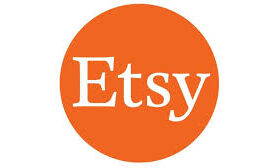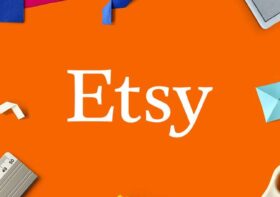SEO Tips for Print-on-Demand Store Owners: How to Grow Your Organic Traffic and Sales

Running a print-on-demand (POD) store is an exciting journey. You create custom-designed products, upload them to your store, and let your fulfillment partner handle the logistics. But here’s the catch: no matter how beautiful your products are, if people can’t find them online, they won’t sell.
That’s where Search Engine Optimization (SEO) becomes your secret weapon.
SEO helps your POD store rank higher in search engines like Google, which means more people find your store without paid ads. Whether you sell custom mugs, anime hoodies, or personalized baby bodysuits, a smart SEO strategy drives targeted traffic that’s more likely to convert.
Let’s dive into the most effective and up-to-date SEO tips to help you build and scale a thriving print-on-demand business.
🛍️ Step 1: Optimize Your Product Listings
Your product pages are the backbone of your POD store. If they’re not optimized for search engines, you’re missing out on a major chunk of organic traffic.
🔍 Do Smart Keyword Research
Start with tools like:
Find long-tail keywords—these are more specific and less competitive. Instead of “custom t-shirt,” try:
- “Funny custom cat t-shirt for women”
- “Personalized dog dad hoodie”
These phrases reflect what real people are actually searching for—and are much easier to rank for.
✍️ Optimize Titles, Descriptions & Alt Text
- Use your target keyword in the product title (but make it sound natural).
- Write compelling product descriptions with your keyword sprinkled throughout.
- Add alt text to every image, describing exactly what’s in the photo.
📝 Step 2: Focus on High-Quality Content
Content isn’t just for blogs—it’s for building authority and bringing in traffic that isn’t directly searching for products (yet).
📚 Start a Blog Around Your Niche
If you sell personalized gifts, write about:
- “Top 10 Personalized Gifts for Dog Lovers”
- “Why Custom Mugs Make the Best Employee Welcome Kits”
- “How to Choose the Right Quote for a Custom Hoodie”
Not only do blogs help with SEO, but they also build trust and emotional connection with your audience.
🙋 Use UGC and Customer Reviews
Encourage buyers to share photos and reviews—these are gold for SEO. Not only do they provide social proof, but when they contain keywords like “soft hoodie” or “funny gift,” they enhance your content naturally.
🖼️ Don’t Skip Image SEO
Name your files like custom-coffee-mug-funny-text.png instead of IMG_2819.png, and use descriptive alt text. This helps Google index your images and can bring in traffic via Google Images.
⚡ Step 3: Optimize Your Store’s Load Speed
Page speed is an official Google ranking factor. But beyond that, a slow site kills conversions—47% of people expect a site to load in 2 seconds or less.
🚀 Tools to Use:
🧹 Speed Optimization Checklist:
- Compress images with TinyPNG
- Minify CSS, JavaScript, and HTML
- Use a reliable, fast theme (especially on platforms like Shopify)
- Consider lazy loading for images below the fold
🔗 Step 4: Build High-Quality Backlinks
Backlinks are like upvotes for your website. Google sees them as a sign of credibility and authority.
🤝 Outreach Tactics That Work:
- Pitch a guest blog to websites in your niche (e.g., “5 Must-Have Custom Gifts This Holiday Season”)
- Partner with micro-influencers to review your products
- Get featured in roundup articles (e.g., “Best Custom Gifts of 2025”)
Backlinks from reputable websites increase your domain authority and help your product pages rank faster.
📱 Step 5: Improve User Experience (UX)
SEO doesn’t stop at search results. Once someone clicks your link, their experience determines if they stay, buy, or bounce.
✅ Key UX Factors to Nail:
- Mobile responsiveness: Over 70% of online shopping is done on mobile.
- Easy navigation: Don’t bury your products under 5 clicks.
- Clear call-to-actions: Use buttons like “Add to Cart” and “Buy Now” that stand out.
- Fast and simple checkout: Avoid asking for unnecessary information.
If users get frustrated, Google notices high bounce rates and may lower your rankings.
📍 Step 6: Use Local SEO (Even for Online Stores!)
Most POD stores ignore local SEO because they operate entirely online—but that’s a missed opportunity.
🧭 Why Local Still Matters:
- You might attract buyers from your region who prefer “local-made” products.
- If you occasionally do pop-up shops or offer local pickup, local search becomes key.
📍 Action Steps:
- Add city-specific keywords: “Custom mugs in Toronto” or “Funny hoodies in Accra”
- Create a Google My Business profile (free and powerful)
- Get listed in local directories
💡 Conclusion
SEO isn’t just a traffic booster—it’s a long-term asset for your print-on-demand business.
It helps you rank organically, earn trust, and reduce dependence on paid ads. But the best part? It compounds. The more consistent you are, the more powerful your results become.
If you’re serious about growing your POD store, start with the tips above and commit to making SEO a core part of your strategy.
Want a free checklist to help you implement all these strategies? Grab our Print-on-Demand SEO Checklist and start optimizing today!



